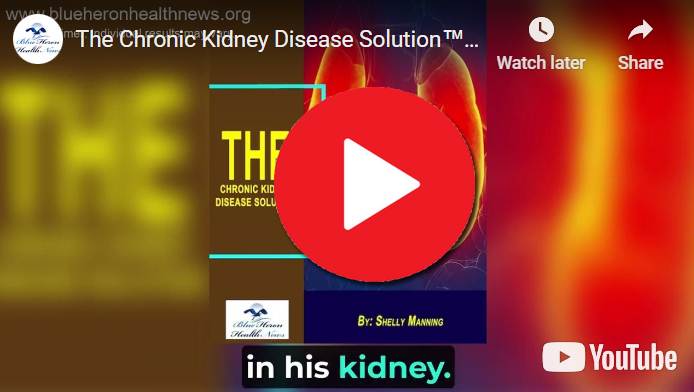
The Chronic Kidney Disease Solution™ By Shelly Manning It is an eBook that includes the most popular methods to care and manage kidney diseases by following the information provided in it. This easily readable eBook covers up various important topics like what is chronic kidney disease, how it is caused, how it can be diagnosed, tissue damages caused by chronic inflammation, how your condition is affected by gut biome, choices for powerful lifestyle and chronic kidney disease with natural tools etc.
What new treatments for CKD are being developed in the USA?
New treatments for chronic kidney disease (CKD) in the USA are focused on slowing disease progression, managing symptoms, and preventing complications like cardiovascular issues. Here are some of the latest developments:
1. SGLT2 Inhibitors (Sodium-Glucose Co-Transporter 2 Inhibitors)
- How They Work: Originally developed for managing diabetes, SGLT2 inhibitors have shown significant promise in slowing the progression of CKD, even in patients without diabetes. These drugs help reduce blood sugar and also lower pressure in the kidneys, reducing damage.
- Examples: Dapagliflozin (Farxiga) and Canagliflozin (Invokana) are two of the key SGLT2 inhibitors used in CKD treatment. In clinical trials, they have been found to lower the risk of CKD progression and kidney failure, as well as reduce cardiovascular risks in patients with CKD(
)(
).
2. Non-Steroidal Mineralocorticoid Receptor Antagonists (MRAs)
- How They Work: MRAs like Finerenone (Kerendia) target the inflammatory and fibrotic processes in the kidneys. Unlike earlier steroidal MRAs, finerenone is non-steroidal, reducing the risk of side effects such as hyperkalemia (high potassium levels).
- Recent Findings: Clinical trials have shown that finerenone can significantly reduce the risk of kidney failure and cardiovascular events in CKD patients with type 2 diabetes(
).
3. Kidney Precision Medicine
- Personalized Treatments: Researchers are developing targeted therapies based on the Kidney Precision Medicine Project (KPMP). This initiative maps out the differences between healthy and diseased kidney tissues to create personalized treatments for CKD. The goal is to address the specific underlying causes of kidney damage in individual patients(
).
- Future Applications: This approach could lead to more effective medications that target the exact pathways involved in a person’s CKD, improving outcomes and reducing side effects.
4. Stem Cell and Regenerative Therapies
- How They Work: Researchers are exploring the potential of stem cell therapies to regenerate damaged kidney tissue. While still in early stages, these therapies aim to repair or replace dysfunctional kidney cells, potentially halting or reversing the progression of CKD.
- Current Progress: Early studies have shown that mesenchymal stem cells (MSCs) can reduce inflammation and fibrosis in the kidneys, offering hope for future regenerative treatments(
).
5. Bioartificial Kidneys
- The Kidney Project: Led by the University of California, San Francisco, this project aims to develop a bioartificial kidney that could eliminate the need for dialysis or transplants in patients with kidney failure. The device uses a combination of silicon nanopore membranes and renal cells to mimic the filtration functions of a natural kidney(
).
- Current Status: While still under development, progress on the bioartificial kidney has been promising, with researchers working toward clinical trials in the near future.
6. Anti-Fibrotic Agents
- How They Work: Fibrosis (scarring) in the kidneys is a major contributor to CKD progression. New drugs, such as Pirfenidone, which are anti-fibrotic agents, are being studied to slow down or prevent the formation of scar tissue in the kidneys.
- Clinical Trials: Studies have shown that anti-fibrotic therapies can reduce fibrosis and improve kidney function, potentially offering a new avenue for treating advanced CKD(
).
7. Gene Therapy and CRISPR Technology
- How They Work: Researchers are exploring gene therapy and CRISPR gene editing as potential treatments for CKD caused by genetic mutations, such as polycystic kidney disease (PKD). These therapies aim to correct the underlying genetic defects that lead to kidney dysfunction.
- Ongoing Research: Although still in experimental stages, gene therapy holds promise for treating certain inherited forms of kidney disease, potentially offering a cure rather than just symptom management(
).
8. Long-Acting Hormonal Therapies
- Parathyroid Hormone (PTH) Modulators: In patients with CKD, abnormal levels of parathyroid hormone can lead to bone and mineral disorders. New long-acting PTH modulators are being developed to better control these complications, improving both kidney and bone health.
- Clinical Benefits: These therapies aim to normalize PTH levels more effectively and with fewer side effects than current treatments(
).
These advancements in CKD treatment reflect a broader trend toward more personalized, targeted therapies that not only address the symptoms but also slow the disease progression and improve quality of life for patients. Many of these treatments are in clinical trials or have recently been approved, offering hope for better CKD management in the near future.

The Chronic Kidney Disease Solution™ By Shelly Manning It is an eBook that includes the most popular methods to care and manage kidney diseases by following the information provided in it. This easily readable eBook covers up various important topics like what is chronic kidney disease, how it is caused, how it can be diagnosed, tissue damages caused by chronic inflammation, how your condition is affected by gut biome, choices for powerful lifestyle and chronic kidney disease with natural tools etc.